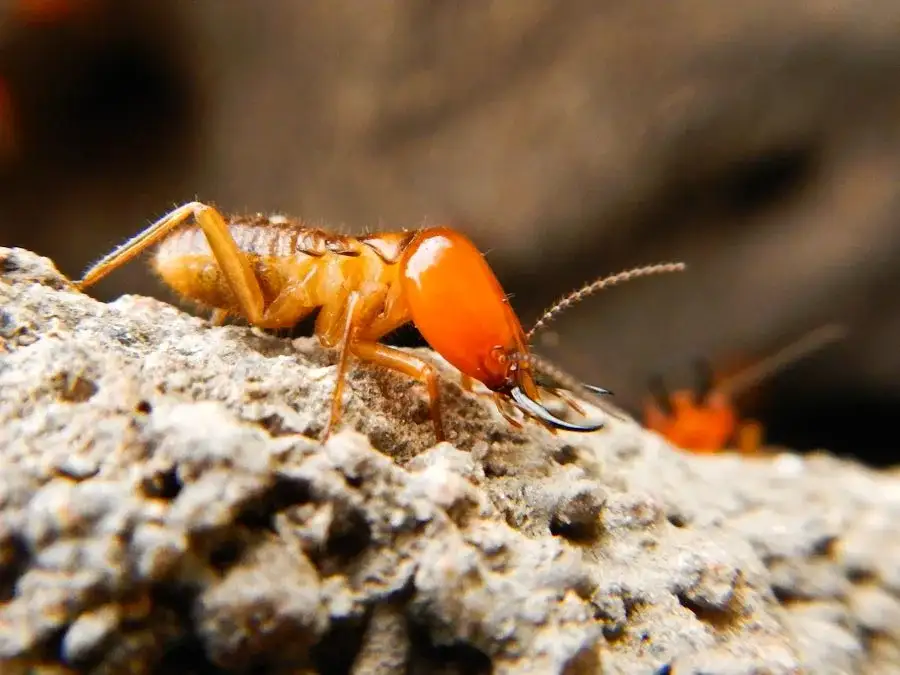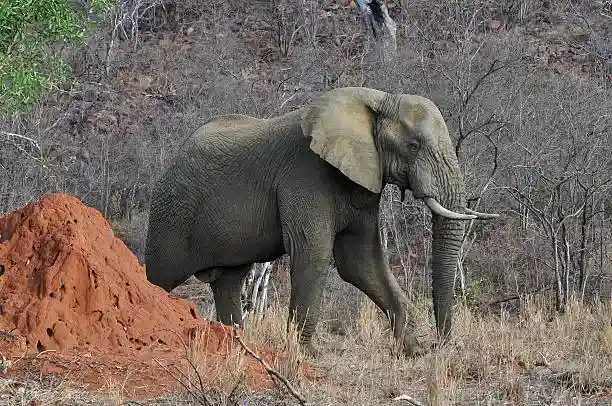Termite mounds can be seen all over the Kruger National Park. We often see them see them all over the landscape as we make our way through the Park.
We drive past these large mounds of sand without giving ‘what’s going on inside?’ much thought but little do we know that inside these mounds, there is a whole colony of termites all doing their duty to make their specific colony a success.
Animals such as lions and Cheetahs use them as a vantage point to spot their prey. Others, like the hartebeest and meerkat, stand on top of them to look out for predators. These mounds are sometimes also used as stepladders to reach tasty leaves in a tree, and elephants have even been seen rubbing up them to scratch their itchy bodies, however, anthills and termite mounds are actually highly complex works of architecture and engineering.
There is a complex colony in each mound consisting of workers, soldiers and a queen, and each one knows what his vital role is and each knows that they cannot exist without each other. The mounds are all built with saliva and sand that sets as hard as cement on the outside. This mound is not solid but instead consists of hundreds of tunnels and ventilation pipes.

THE WORKER
The workers go out daily to collect food, which is mostly grass, and partially digest it. Then when they get back to their mound they excrete the partially digested food onto fungus gardens. Once the fungus has broken down the material, it is eaten by the whole colony. The queen and the nymphs of the colony are feed the fungus balls.
The fungus garden will not function properly if the mound is not kept at a constant temperature of 32 degrees C. The termites therefore build the mound with a chimney in the middle and side vents. The central chimney is for the hot air to escape and the vents are built into the sides so that the cool surface air can ventilate the mound.
Workers are responsible for the maintenance of the mound, and they also have to tend to the fungus gardens, feed the soldiers and care for the queen and offspring.
THE SOLDIERS
Soldier termites resemble worker termites in a few ways. For example, both castes have rounded bodies that are coloured a pale reddish-brown or white. However, a termite soldier can be easily distinguished from other kinds of termites. Termites that are larger than average, have heads that are darker or a different colour than their bodies and feature either protruding jaws or snouts are considered to be the soldiers. These soldiers make up about 1-10% of any given colony's termite population.
They are defensive specialists which are able to squirt a liquid that is an irritant and helps to keep attackers away.
THE KING
King termites come from swarmers, the potential queens and kings of new colonies. When a termite colony reaches a specific size, swarmers begin being produced, a process that may take three to five years. Swarmers, also referred to as alates, are termites with wings and are capable of flying.
A male swarmer will follow a female swarmer until she finds a suitable place for nesting where they start mating. On forming a new colony, the males become termite kings.
The termite king lives a well-protected life underground. Its primary roles are to mate with the queen and to release pheromones.
THE QUEEN
The termite queen is truly remarkable. She can live up to 30 years. She does not look like the other termites but is rather a large wormlike creature. She can lay up to 30 000 – 45 000 eggs in a single day. The queen also gets buried by the workers when she dies. Once she has died one of the nymphs will get fed a chemical that will stimulate her in order to become the next queen.
Once a year, usually after the first summer rain, alates which are flying termites, leave their respective mounds and males and females from different colonies will find each other and start a new mound.
Flying termites are a major food source for mammals, birds, reptiles, amphibians and even some humans. Termites are very high in nutrients. The aardvark and pangolin open up the mounds with their sharp claws and feast on the termites. Warthogs, wild dogs and hyena often occupy abundant termite mounds as a den. Snakes and lizards also make use of old termite bounds as a safe place to lay their eggs.

THEIR IMPORTANCE
they play a key part in maintaining the ecological balance of the natural system which sustains life. Findings showed that termite mounds create heterogeneity and alter soil properties to include more moisture and nutrients. Furthermore, they create a diversity of grass which is grazed upon by a variety of herbivores, specifically mammals. Termite mounds are essential in creating savanna biodiversity and enables sustainable grazing.
Farmers sometimes destroy termite mounds or poison termites because they think termites are competing with their livestock, whereas termites will mostly benefit the grazing available for cattle.
When mature, winged termites, known as alates, fly out of the mounds, they provide a feast for a wide range of birds, insects, reptiles and even small carnivores, such as jackals. Termites are also an important source of food for aardvark. Aardvark holes, in turn, create important niches for a wide range of other animals.
INTERESTING FACTS:
The coloration of the workers is determined by the food they gather. Those feeding on fungus comb have a dark brown abdomen while those eating plant litter have reddish-brown abdomens.
To feed themselves the African termite will engage in a primitive form of agriculture. They gather wood and leaves which are not digestible. These are used to grow a fungus which can only grow in the conditions created within termite mounds.
After hatching the majority of the nymphs will not complete their metamorphosis in to an adult. They will spend their life in the nest they were born working to raise larva or acquire food for the colony.
Prior to the rainy season a small number of the nymphs finish their metamorphosis at which point they develop reproductive organs and wings. At night they emerge from the nest and find a mate with which they will settle down and form a new colony.
The queen’s abdomen will swell massively and she begins to lay eggs. Workers then wall up the nest and carry the eggs away along with bringing her food.
Termites live in large nests known as the “castle” or termitarium. These are large red-brown structures sticking up out of the earth. They may be 9m (30ft) in height and 3m (10ft) across. Along with the above ground structure they extend far underground.
Each colony may include up to a million termites.
Termites are often associated with ants but the two groups are unrelated. Instead the termites are most closely related to cockroaches.
Visit the South African wild with us and enjoy the amazing sights of these mounds throughout the African plains, amongst our beautiful brown, yellow and green coloured vegetation and beautiful, majestic wildlife.
Nhongo Safaris is ready to show you all the wild has to offer.
